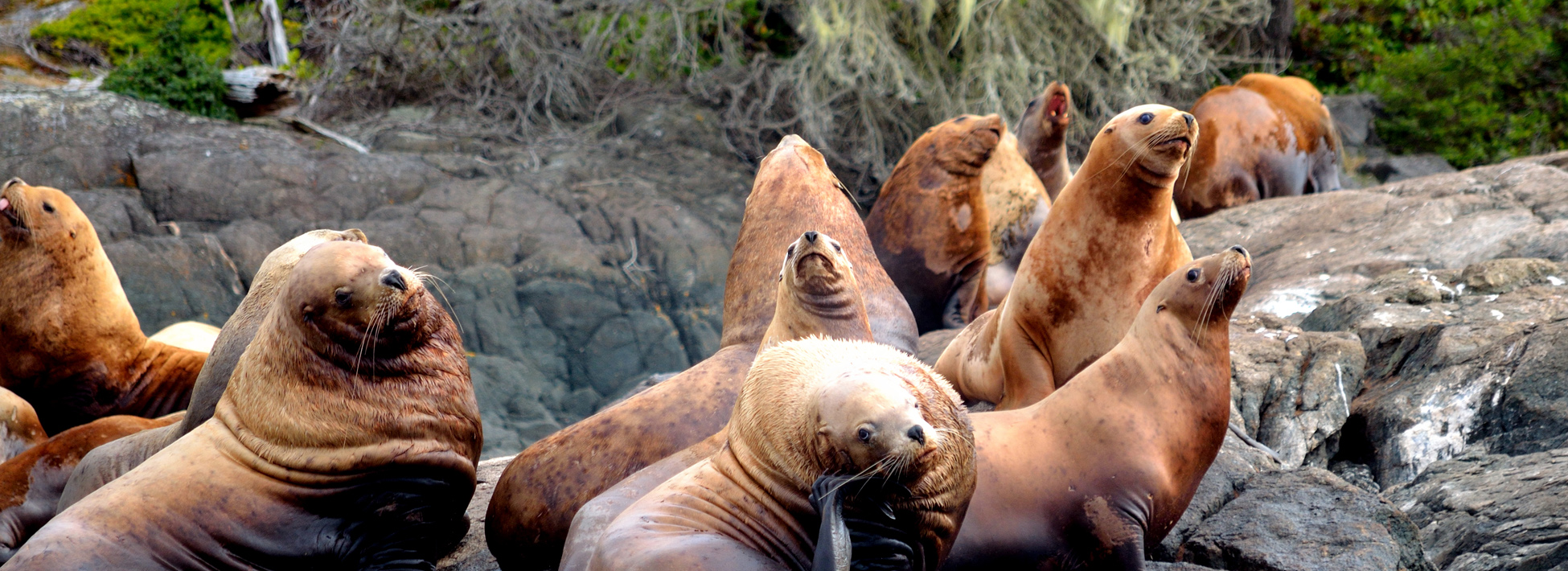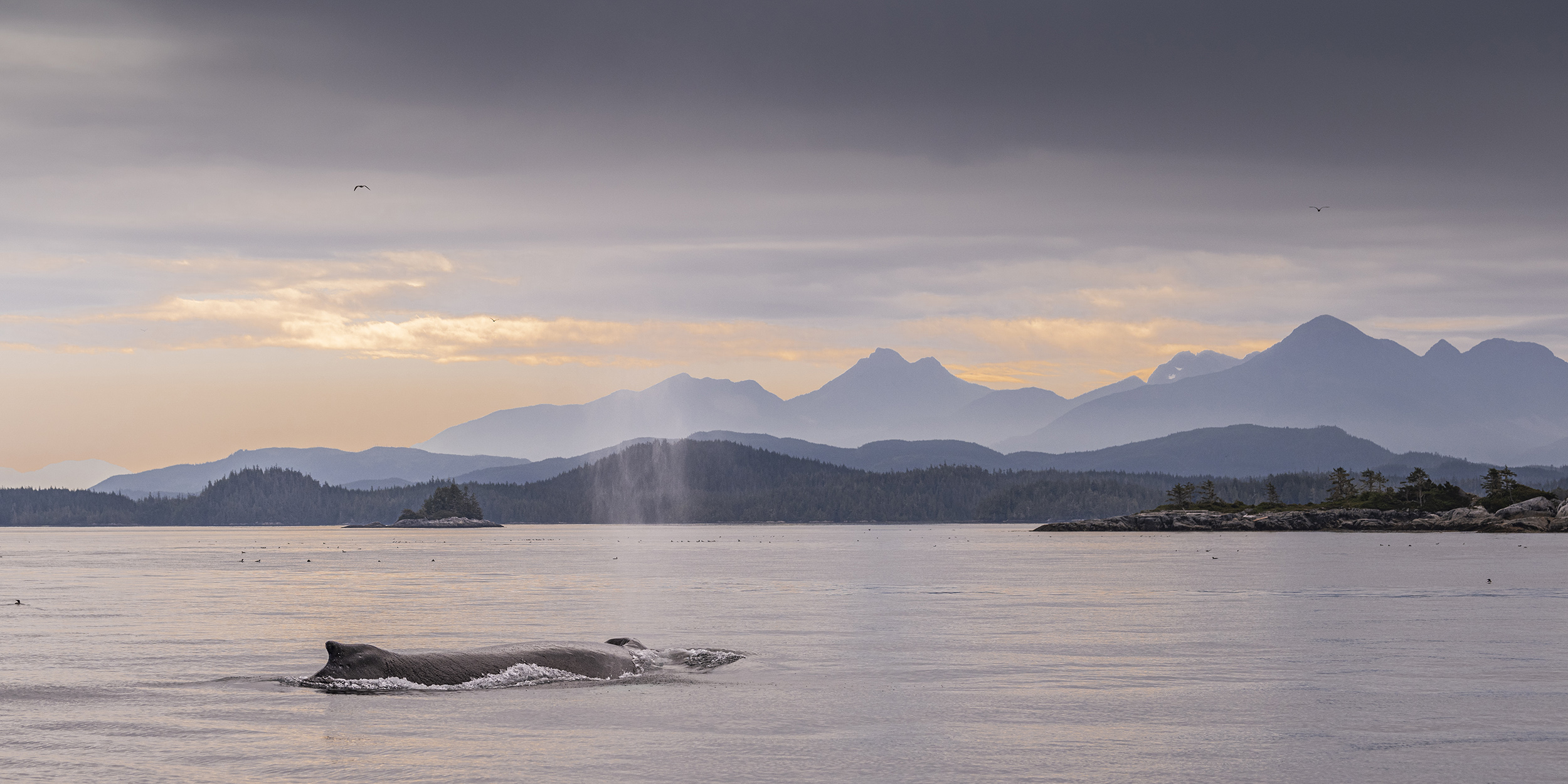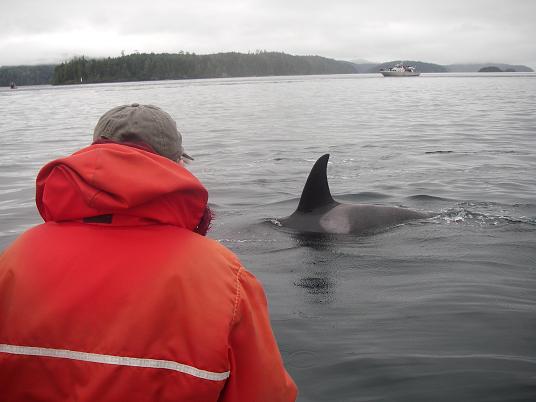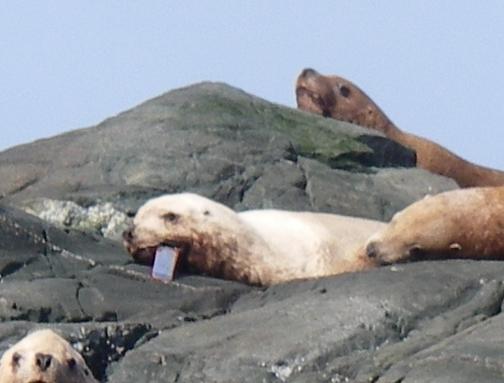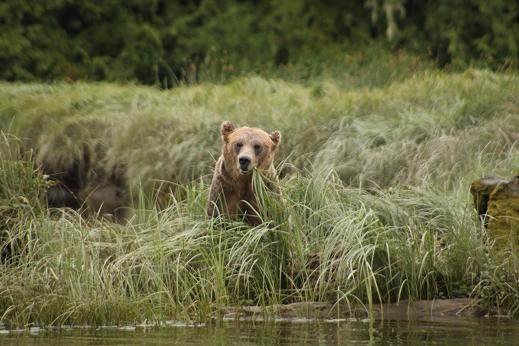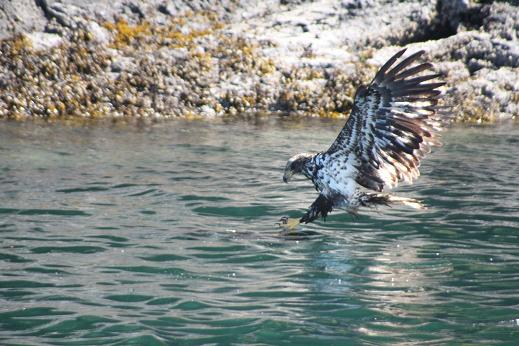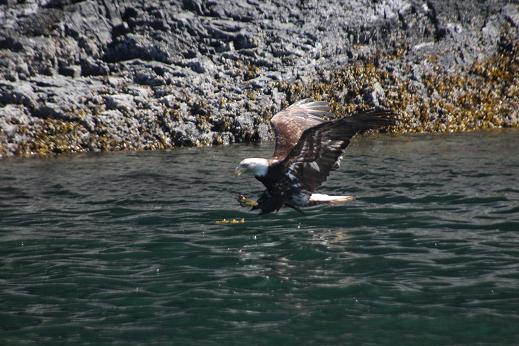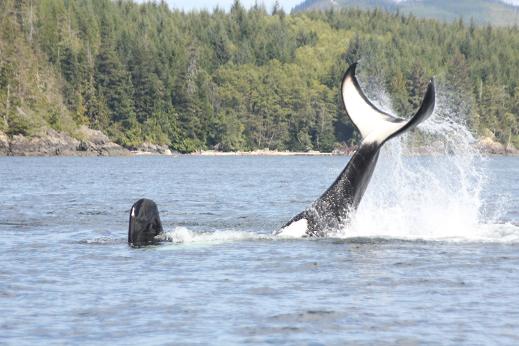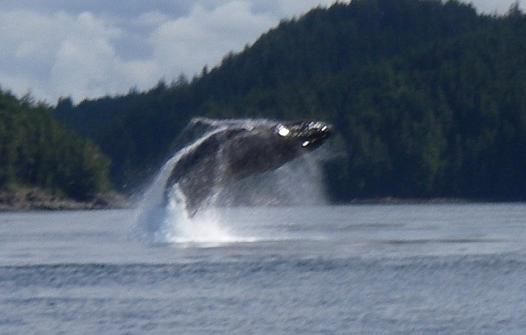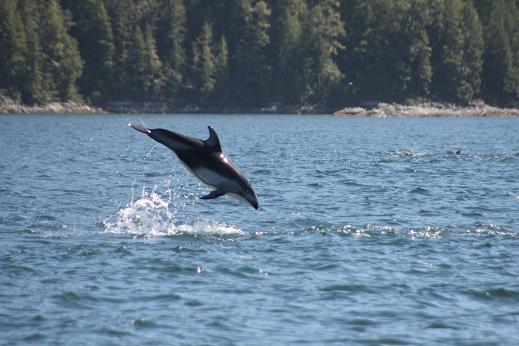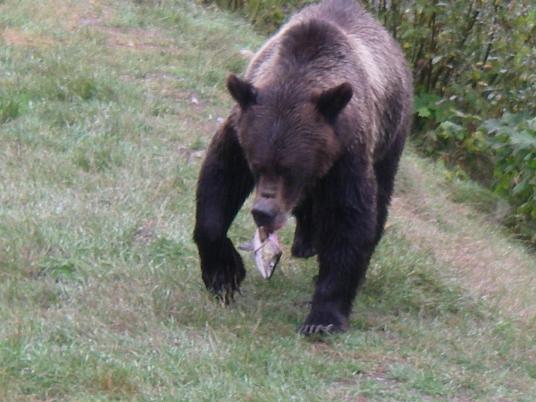The white dot on land above the guest’s head is Cracroft Point. The area between our boat and the point is a common feeding area for killer whales. A good morning whale watching is to come out a Cracroft Point and find a pod of orca because that means we can turn off our engine and drift while the orca feed. With engines off the orca often surface close to the boat which makes for an excellent photo opportunity.
